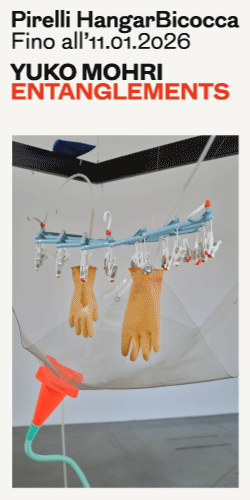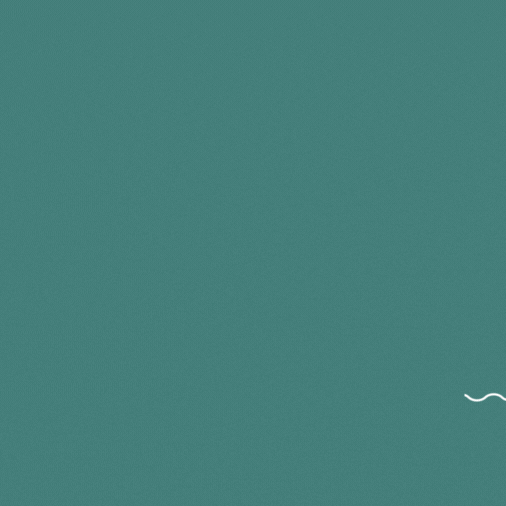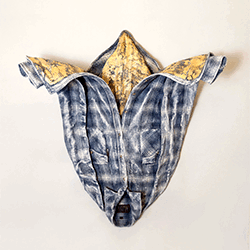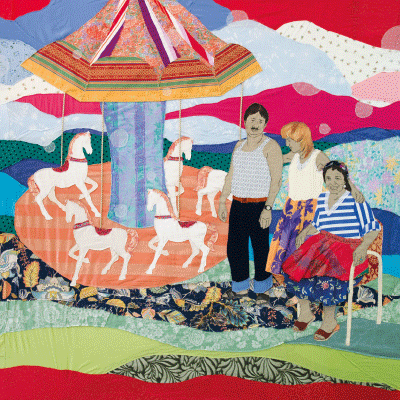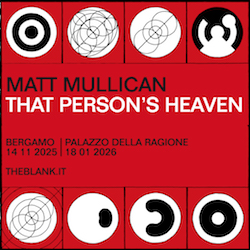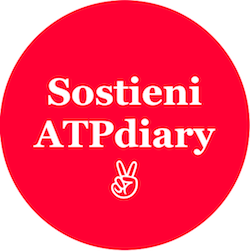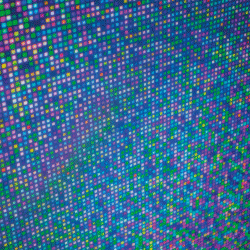



books, handles, talc, ananas, 200, 90, 90 cm and Andrea Romano, various works , 2012







Orlando / David Douard, Yannic Joray, George Henry Longly, Emanuele Marcuccio, Christoph Meier, Katja Noviskova, Andrea Romano.
a cura di Luca Francesconi
fino al 20 novembre 2012 / Fondazione Brodbeck, Catania
Nel limite dove l’azzurro volge l’argento vi è uno spazio interiore, virtuale, che disegna la storia dell’isola in mezzo al Mediterraneo. È uno spazio costruito di cose che restano, storie, suggestioni ed immagini, soprattutto. La Sicilia è il luogo dove la storia ha assunto caratteri multiformi che spesso hanno trovato identità differenti rispetto la loro origine.
Orlando non è una mostra e certamente non è un insieme di eventi, pur essendo, questi, parte del progetto che da alcuni mesi, assieme a molte persone, sto portando avanti. Preferisco definirlo un format che si estende sul territorio siciliano e che si svolge presso la Fondazione Brodbeck, il Museo Lucio Piccolo di Ficarra e altre realtà di progetto come l’A (Palermo), BOCS (Catania), C.O.C.A. (Modica).
Orlando vuole parlare dell’Isola attraverso un evento che si nutre tanto della rete quanto della realtà, coinvolgendo artisti che si confrontano non solo con l’attualità e la tradizione ma anche con l’immaginario collettivo che la Sicilia riveste nel mondo.
Orlando vuol dare corpo ad un ipertesto ambiguo nel quale il Mediterraneo è traslato attraverso la sua derivazione latina, e dove le suggestioni della storia o le sue raffigurazioni classiche si scontrano con immagini stereotipate. Anche il titolo, che prende il nome dall’antico paladino protagonista della Chanson de Roland, nella storia ha mutato spesso la sua valenza. Utilizzato in maniera “alta” da poeti quali Boiardo e Ariosto, la tradizione lo ha “cambiato”, forse “abbassato” e “storpiato”, facendolo diventare il condottiero un po’ sgangherato del Teatro dei Pupi. Queste marionette, tanto preziose e di meticolosa fattura, appaiono – e quasi estremizzano – quel portamento dinoccolato e vanaglorioso, che già fu del Don Chichotte di Cervantes, pazzo e sognatore di un passato che non ritorna.
Oggi i pupi fanno parte dell’immaginario collettivo, stranamente rustico e popolare, che la Sicilia ha nel mondo intero. Quasi a sottolineare come le immagini siano “scatole” che cambiano in continuazione il loro contenuto, e dunque il loro significato.
La mole di suggestioni fluide a cui potevamo attingere ci ha portato a dare vita ad una raccolta tematica di immagini sul sito internet dedicato all’evento (www.orl4ndo.com): diversi artisti, anche non presenti nella mostra di Catania, hanno proposto una rilettura della tradizione mediterranea, declinata con un enorme ventaglio di punti di vista, che sta alla base delle tematiche di Orlando.
La mostra alla Fondazione Brodbeck vuole essere in qualche misura la parte più empirica di questo percorso. I lavori di David Douard, Yannic Joray, George Henry Longly, Emanuele Marcuccio, Christoph Meier, Katja Noviskova, Andrea Romano sono messi in dialogo negli spazi catanesi; l’archeologia industriale del “fortino” è posta in discussione, infatti, con opere che prendono spunto dall’idea di tradizione ma la remixano in un’estetica fluida, e dove gli elementi visivi sono posti vicino ad oggetti della contemporaneità. Emerge una visione trasversale della cultura siciliana (e dell’estetica in generale), in cui il tempo, inteso in senso cronologico, è alterato, e la storia stessa è presa nella sua integralità, senza più distinzione tra il concetto di “precedente”, “contemporaneo” e “futuribile”. Se, dunque, l’idea di “continuità temporale” delle epoche, o la Storia come dialettica di eventi è in qualche misura figlia dell’Idealismo, la lettura che Orlando propone è dominata da una visione decisamente materialistica: molte opere sono veri e propri oggetti riproposti, magari riletti con materiali della tradizione (come il marmo o la ceramica classica siciliana), ma il senso stesso di opera d’arte è compromesso con la banale realtà, essendo la realtà stessa discutibile, ed in questo senso “virtuale”. Questo neo-materialismo, già teorizzato da filosofi come De Landa, Silvio Ceccato o Brice DeWitt (in campo fisico), è l’alveo naturale in cui sviluppare l’idea di “database”.
Il progetto di Orlando, contemporaneamente reale e virtuale, estremizzando l’idea di “contenitore”, se fosse possibile da visualizzare in un solo momento – per esempio un colpo d’occhio – non sarebbe un collage disposto su un piano, ma una sequenza infinitamente veloce e successiva di miliardi d’immagini, che una dopo l’altra scorrono in un tempo piccolissimo, magari infinitesimale. La rete, quindi, in un contesto estetico ormai globalizzato, simula questa situazione e diventa una banca dati assolutamente sparsa, inesatta e caotica nella quale il senso comune prende forma.
Il ritratto della Sicilia è volutamente sbagliato, o meglio, generalizzato, massificato: un compendio estetico divergente. Una rappresentazione di Antropologia Radicale che potremo accomunare alle nuove pratiche di Gonzo-antropology o di “aquired tastes”, nelle quali il folklore, l’immaginario collettivo, la cultura digitale, così come elaborazioni di particolarità siciliane, si fondono in maniera subliminale.
Luca Francesconi
orl4ndo.tumblr.com
fondazionebrodbeck.it/
ORLANDO / David Douard, Yannic Joray, George Henry Longly, Emanuele Marcuccio, Christoph Meier, Katja Noviskova, Andrea Romano.
Curated by Luca Francesconi
In the boundary where the blue turns into silver is an inner,
virtual space, that delineates the history of the island in the
middle of the Mediterranean. It is a space made up of things
that remain, above all of tales, impressions and images. Sicily is
the place where history has taken on multiform attributes that
have often found a different identity to their origin.
Orlando it is not an exhibition as such, certainly not even a series of events, though both are contained in the project we have been undertaking for a number of months, together
with many collaborators. I prefer to call it a format that extends throughout the Sicilian territory, taking place at the Fondazione Brodbeck (CT), Museo Lucio Piccolo (Ficarra,
ME) and other project locations such as at the l’A Projectspace (Palermo), Bocs (Catania) and C.O.C.A. (Modica, RG).
We wish to speak of the island through an event that draws as much on the internet as from reality, involving artists that deal not only with the present time and tradition but also with the collective imaginary that Sicily plays in the world. Orlando seeks to lend substance to an ambiguous hypertext in which the Mediterranean is channeled through its Latin derivation, and where the fascination of history or its classic depictions clash with stereotyped images. Also the title, which takes its name from the paladin protagonist of the Chanson de Roland, has often changed its significance in history. Used in a “high” manner by poets such as Boiardo and Ariosto, tradition has “changed” or perhaps “lowered” and “deformed” him, making him the somewhat ramshackle central figure of the Theater of Puppets. These marionettes, so highly cherished and of meticulous workmanship, appear – and almost accentuate – that shambling and boastful demeanor typical of Cervantes’ Don Quixote, the crazed dreamer of a past that can never return. Today the Puppets are part of the collective imaginary, peculiarly rustic and popular, which Sicily has throughout the world. Almost to highlight how the images are “boxes” that continually change their content, and therefore their meaning.
The sheer quantity of open-ended propositions which we were able to draw on has led us to set up a thematic collection of images on the website dedicated to the event (www.orl4ndo.com): various artists, also not present in the Catania exhibition, have proposed a reinterpretation of the Mediterranean tradition, set out with an enormous range of viewpoints, which lie at the roots of the themes of Orlando.
The show at the Fondazione Brodbeck hopes in some ways to be the more empirical part of this procedure. The works by George Henry Longly, Andrea Romano, Christoph Meier, Emanuele Marcuccio, Yannic Joray, Katja Noviskova and David Douard are framed in relationship to the Catania spaces; the industrial archaeology of the “fort” is considered in association with works that take their cue from the idea of tradition but remix it in an a flowing aesthetic, where the visual elements are set close to objects of contemporary life. A transversal vision of Sicilian culture (and aesthetic in general) emerges, in which time, in a chronological sense, is altered and history itself is conceived in its entirety, without distinction between the concepts of “preceding”, contemporary” and “potential”. If, therefore, the idea of “temporal continuity” of the ages, or History as dialectic of events, is in some way the descendant of Idealism, the interpretation that Orlando puts forward is dominated by a decidedly materialistic vision: many works are authentic objects presented anew, perhaps even reinterpreted with traditional materials, such as marble or classic Sicilian pottery, but the very meaning of art work is compromised with the banal reality, in so far as reality itself is debatable, and in this sense “virtual”. This neo-materialism, theorised by philosophers like De Landa, Silvio Ceccato or Brice DeWitt (in the physical field), is the natural channel in which to develop the idea of “database”.
If it were possible to visualize in a single moment – for instance in the blink of an eye – the Orlando project, real and virtual at the same time and carrying the idea of “container” to the extreme – it would not be a collage set out on one level, but an endlessly fast and successive sequence of millions of images, which one after the other flow in an infinitesimal lapse of time. The internet, in today’s globalized aesthetic context, therefore simulates this situation, and becomes an entirely scattered, inexact and chaotic databank in which collective sense takes shape. The portrait of Sicily is intentionally erroneous, or rather generalized, standardized: a diverging aesthetic compendium. A representation of Radical Anthropology that we could liken to the new practices of Gonzo-anthropology or of “acquired tastes”, in which folklore, collective imagination and digital culture, just like elaborations of Sicilian particularities, become fused in a subliminal way.
Luca Francesconi
orl4ndo.tumblr.com
fondazionebrodbeck.it/


